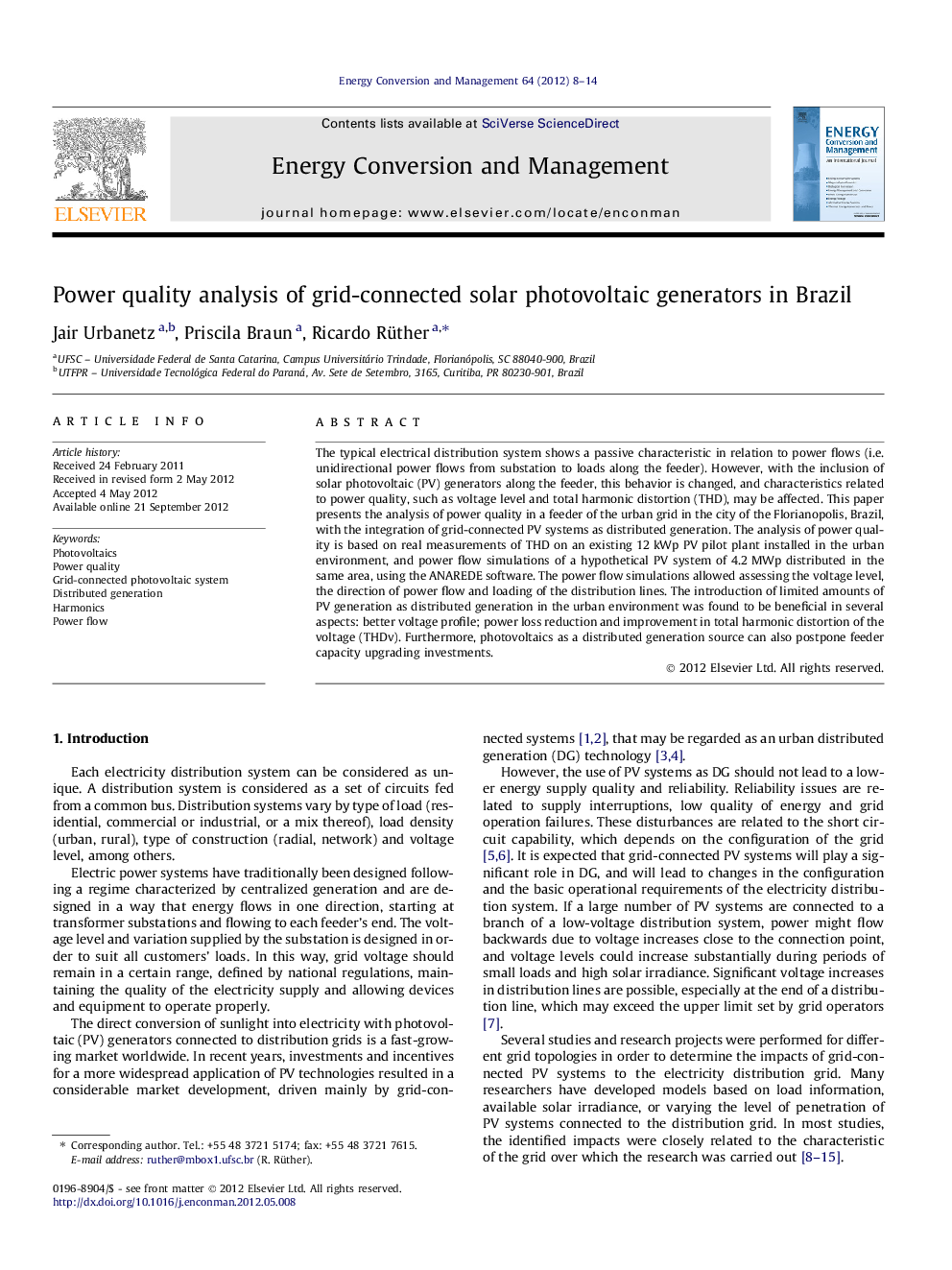| Article ID | Journal | Published Year | Pages | File Type |
|---|---|---|---|---|
| 761099 | Energy Conversion and Management | 2012 | 7 Pages |
The typical electrical distribution system shows a passive characteristic in relation to power flows (i.e. unidirectional power flows from substation to loads along the feeder). However, with the inclusion of solar photovoltaic (PV) generators along the feeder, this behavior is changed, and characteristics related to power quality, such as voltage level and total harmonic distortion (THD), may be affected. This paper presents the analysis of power quality in a feeder of the urban grid in the city of the Florianopolis, Brazil, with the integration of grid-connected PV systems as distributed generation. The analysis of power quality is based on real measurements of THD on an existing 12 kWp PV pilot plant installed in the urban environment, and power flow simulations of a hypothetical PV system of 4.2 MWp distributed in the same area, using the ANAREDE software. The power flow simulations allowed assessing the voltage level, the direction of power flow and loading of the distribution lines. The introduction of limited amounts of PV generation as distributed generation in the urban environment was found to be beneficial in several aspects: better voltage profile; power loss reduction and improvement in total harmonic distortion of the voltage (THDv). Furthermore, photovoltaics as a distributed generation source can also postpone feeder capacity upgrading investments.
► With the extensive use of PV as DG, power quality issues arise, and need to be addressed. ► Voltage rises due to distributed PV can be beneficial in the end of long feeder lines. ► The feeder cable loading levels proposed led to the appearance of inverse power flows. ► PV as strategically-sited DG was found to be beneficial to the improvement in THDv.
